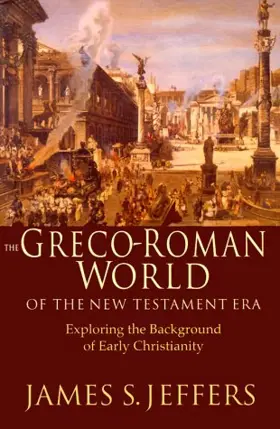

The Greco-Roman World of the New Testament Era: Exploring the Background of Early Christianity
Pages
352
Publisher
InterVarsity Press
Published
10/1/1999
ISBN-13
9780830815890
What was life like for first-century Christians?Imagine a modest-sized Roman home of a well-to-do Christian household wedged into a thickly settled quarter of Corinth. In the lingering light of a summer evening, men, women and children, merchants, working poor and slaves, a mix of races and backgrounds have assembled in the dimly lit main room are are spilling into the central courtyard. This odd assortment of gathered believers--some thirty in number--are attentive as the newly arrived and travel-weary emissary from Paul reads from the papyrus scroll he has brought from their apostolic mentor.But if you were to be transported to this scene you would perhaps be overwhelmed by a flood of unexpected difference. The voice of the reader recedes as through open windows the din and clamor of the city assault your ears. Hooves clunk and cart wheels grind and echo from the street while drivers shout, vendors call and neighbors gather and converse. And later, as you accompany a family through darkened and dangerous streets to their third-story tenement apartment, you might try to mask your shock at the cramped and unsafe conditions.In The Greco-Roman World of the New Testament Era James Jeffers provides an informative and scenic tour of daily life during the time of Jesus and the apostles. He affords "you-are-there" glimpses of everything from legal codes to dinner foods, from social hierarchy to apartment living, from education to family dynamics. His eye-opening book will advance your understanding of the New Testament and early Christianity and enrich your reading and application of the Bible.
Reviews
[Full Review]
The book of J. Jeffers is an attempt to offer to the non-scholar and to the scholar student of the New Testament a thorough picture of the Greco-Roman societies in the New Testament era, which the writer identifies with the first century A.D. Having always in mind the first group of his readers he avoids using technical terms unless he feels they are necessary. He also tries to present those particular aspects of the life in the Greco-Roman world that he thinks could help his readers place the New Testament in its original historical setting and consequently understand it better. The material is divided into 13 chapters that are supplemented by two appendices and maps. Each chapter is introduced by quotations of Greek and Latin writers that are related to the subject that is treated and closes with a list of books for further reading. In each chapter the reader can also find relevant photos and plates. The first chapter serves as a warm-up for the chapters that follow. It describes a fictive dinner at the home of a member of the ruling class of first-century Jerusalem. It is in fact a brief sketch of the rise of Rome to the position of the greatest political power of the first century A.D. The same subject, though in a more detailed form, can be found in Appendix A and Appendix B where the chronological frame of the events is set. Chapter 2 treats several aspects of the everyday life in the world of the first century A.D., such as food production and eating habits, trade, banking and business, crafts and manufacturing, leisure and games, travel, attire and fashion. Tentmaking, the trade Paul was engaged in, is also discussed. Finally, the last part of the chapter refers to burial practices of the Romans and Jews.
[Full Review]

